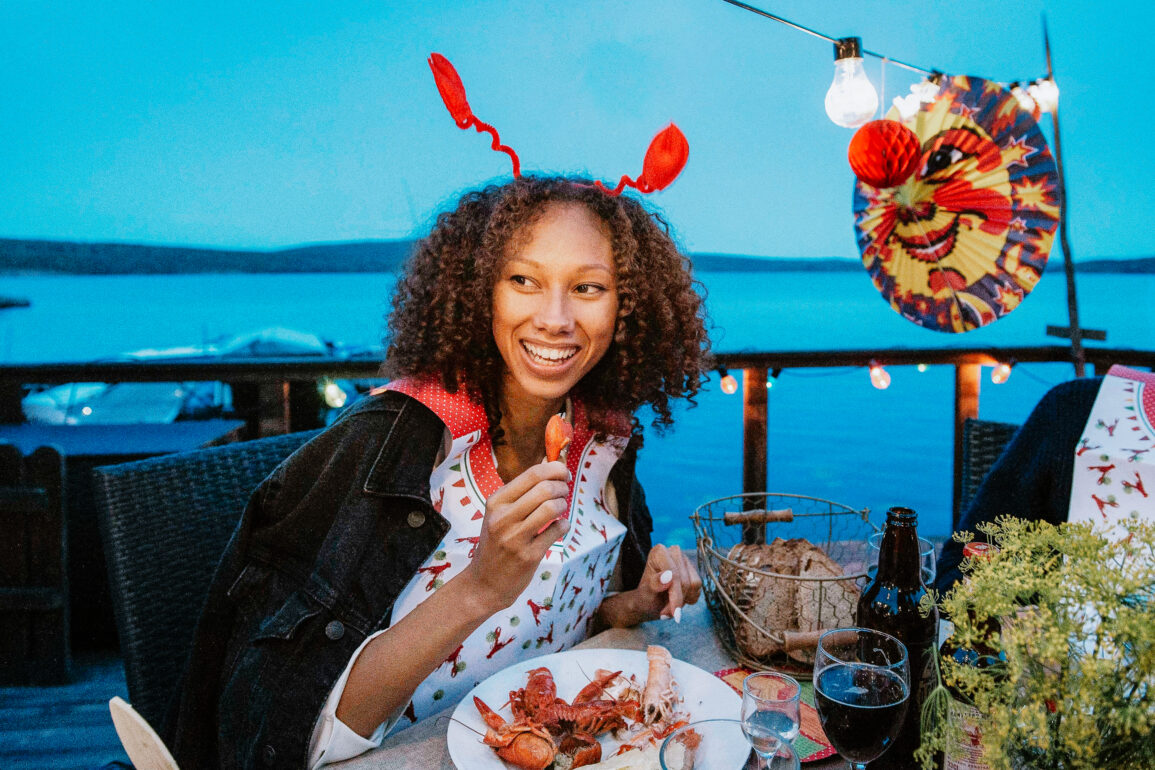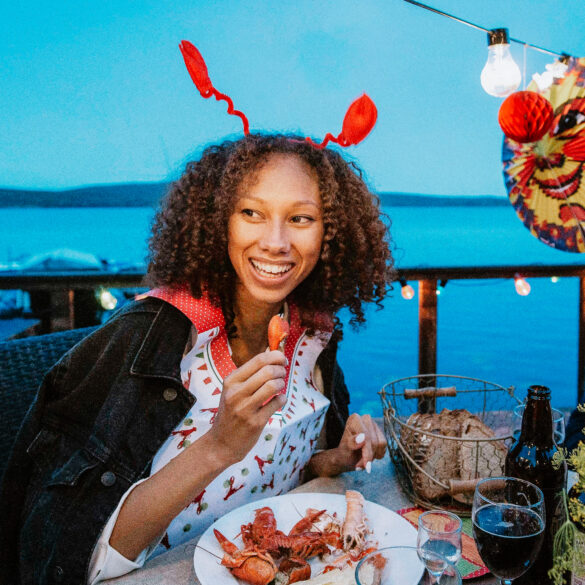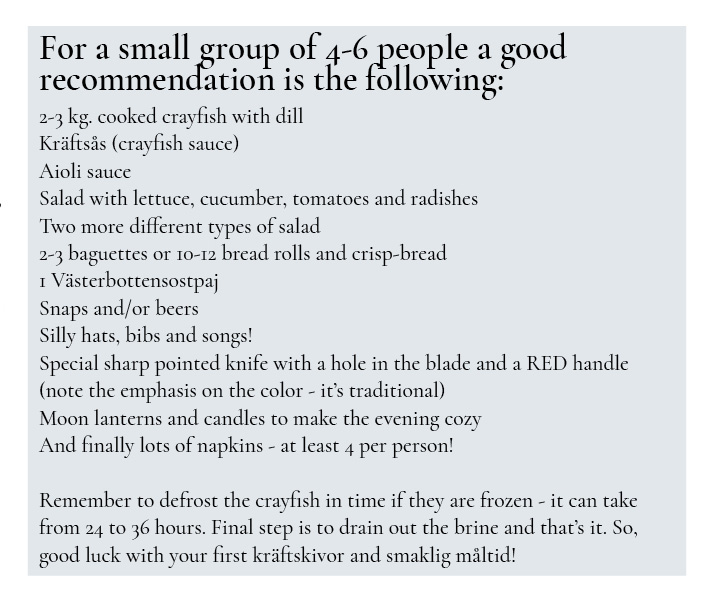Silly hats, colorful bibs and happy, smiling moon-shaped paper lanterns are the theme for late summer’s Norrland culinary celebration. From the first Wednesday in August onwards, it’s time to get messy with crayfish!
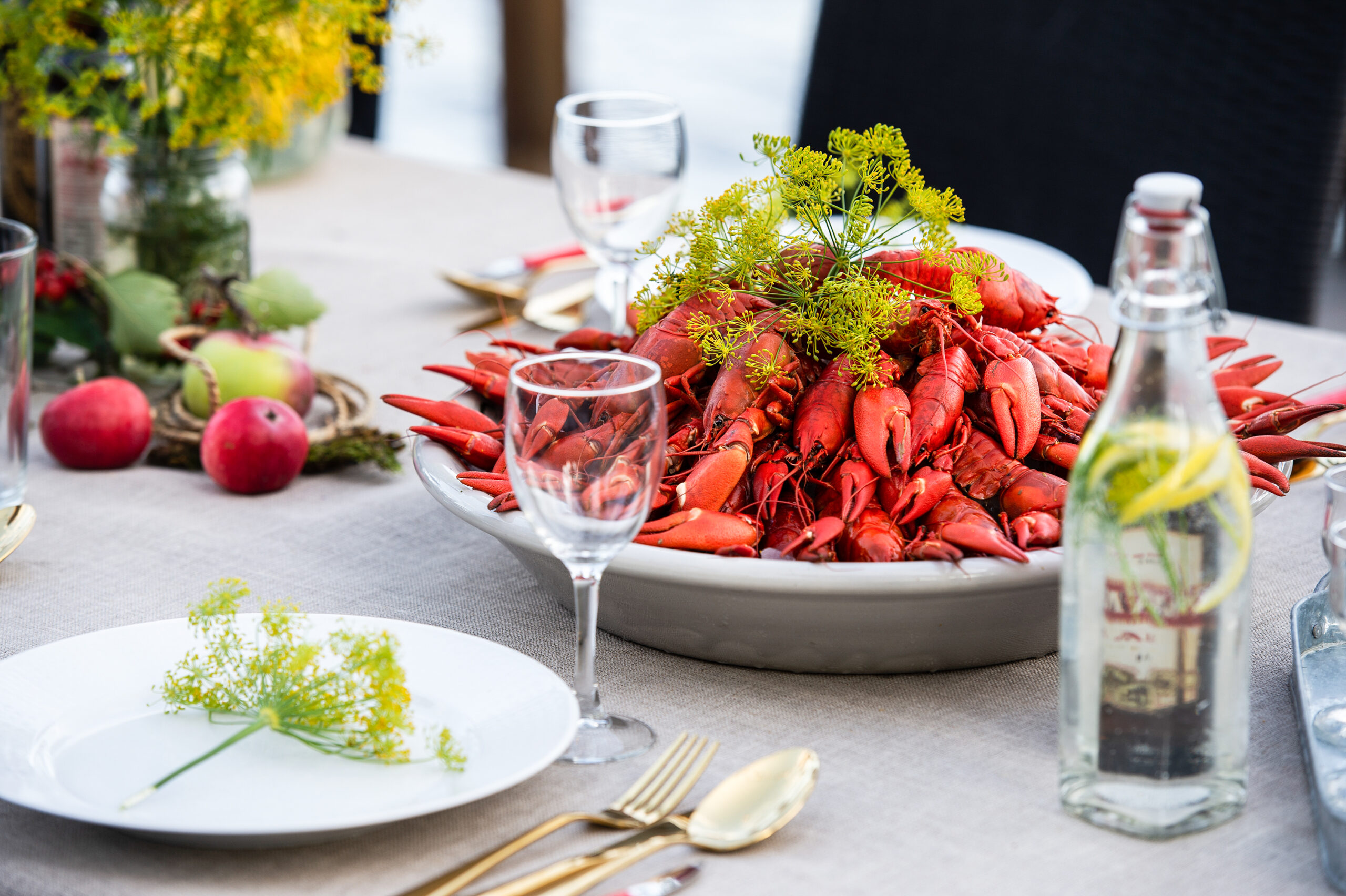
It’s time for the “kräftskivor” or crayfish party where you learn to overcome your fear of ridicule and party with your friends in a less traditional style. It may be similar to the surströmming celebration, but this one is much gentler on the nose, but still comes with all the “Swedish foodie goodies”, including silly songs and swilling cold snaps as you probably did at Midsummer. Not to be celebrated on a particular day, the crayfish party is a festivity that can be spread out over several weeks, be held outdoors or indoors (depending on the weather), and which actually just means more excuses to get together and enjoy each others’ company around food and drinks. And that, let’s face it, is a recurrent theme in Swedish traditions – hurrah!
Democratization of a dish: from the royalty to the masses
The consumption of crayfish dates back to the 1500s when only the nobility in Sweden would eat it directly from the shells, while the middle class stuffed the tail’s meat into sausages and patties. Finally in the 1800s, the crayfish became nationally recognised as a delicacy and more widely accessible to all layers of society due to the rationalization in farming, when many farmworkers were left without jobs and in order to survive took up fishing instead, therefore making the crayfish more widely available and thus more popular.
’Stop eating crayfish!’
Now it was the middle class’s turn to eat and enjoy, and in the process they started the tradition of wearing silly hats to make fun of the upper class and their posh hats. Later on, in the early 1900s, two things happened. First of all, the crayfish plague arrived in 1907, leaving very few for any kind of party consumption. As a result, most Swedes nowadays buy frozen ready-cooked imported crayfish. Secondly, crayfish became so popular that the government had to put in practice regulations to avoid the animal’s extinction, only allowing it to be caught between August and the end of October. In fact, until 1994, it was forbidden to fish for crayfish until 5pm on the first Wednesday in August, whereupon lots of Swedes would celebrate the ’crayfish première’ by throwing a party. And so, a tradition was strengthened. However, this law was revised to allow the fishing of crayfish at any time of the year – though some restrictions may apply in order to give the crustaceans in a specific ecosystem time to grow (see page 8). Today, crayfish can be bought in most supermarkets and is imported from a variety of countries, such as China and Turkey. However, the Swedish crayfish, though more expensive, and slightly smaller, is definitely the tastiest, so it might be worth tracking it down.
How to eat it

SOS: Save our crayfish!
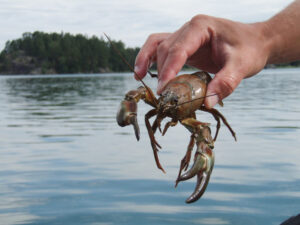
This year in the Skellefteå River in May they discovered dead crayfish, and after sending them to the lab for tests, it was determined that they died because of crayfish plague. The County Administrative Board suspects that the infection came from illegally planted signal crayfish in upstream areas. This plague is a water mould that affects crayfish and can be transported from one fresh water body to another through fishing gear, boats, swimming suits and even your dog bathing in one river and then taking a swim in another river or lake! The best way to stop the spread and save the local crayfish is to disinfect your equipment and let things dry in the sun for at least 24 hours before going to another area of fresh water.
Skellefteå River has therefore been classified as plague infected and there is a ban on fishing crayfish until 2024. So please be smart and eco-friendly and read the municipality’s website for more information on how you can help to ensure the crayfish’s future. We all need to be aware of what to do to help and help look after the crayfish.
https://tinyurl.com/2p98mruf
